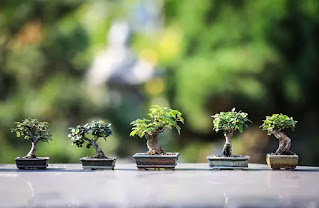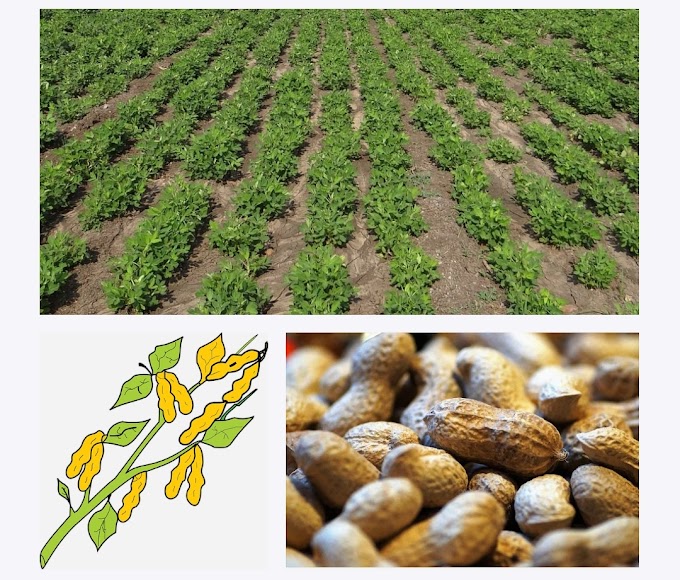Top ten most profitable crops on small farms to grow. Small farms are usually a variety of businesses run by small groups of people, so it is important that what you plant is well suited to your space, market and timing. Determining which crops are best for your situation will depend on many different factors, besides the obvious ones such as climate and soil. Here we have compiled this list of crops by looking at its value per kilogram, its growing cycle, per square meter yield, labor intensity and annual income per hectare.
10. Wasabi
The real wasabi costs about $ 50 per 100 plan. At high prices, wasabi still sells for about $ 160 a kilogram. The actual wasabi is in excellent condition about 15 minutes after the plant is ground into a paste. After that, it begins to lose its flavor. So if you have ever had something labelled wasabi that unsupported in front of you, it may not have been real. The real wasabi is actually not the root, but the stem of the body. The two ingredients in this plant combine to give a spicy signature flavor, but the mixture is not very stable and breaks down quickly. The leaves and stems of the leaves are also eaten. Wasabi is difficult to grow because it prefers freshwater rivers. It is difficult to grow in a greenhouse because it is infected. In fact, it is considered one of the most difficult plants in the world to grow. This follows that with the reputation of buying high prices.
9. flowers
You may have heard of the Dutch tulip mania in 1637 when one tulip lamp cost more than the average person would earn in a year. While flower growing today is nowhere near that profitable, it can still be a special harvest of the highest value on your small farm. Within the main flower category, the options for what you can plant are almost limitless. You can plant different bulbs, cut flowers, dried flowers, and more. Flowers growing outside should be able to gross about $ 50,000 per acre even if you sell in bulk to retailers.
8. Bonsai plants
A bonsai is an ornamental shrub or tree grown in a pot. Its roots are limited to preventing it from reaching its normal size. Bonsai plants can range in price from $ 20 for minors to $ 5,000 + or more for top models. Bonsai growth does not require as much space as the plants are compacted. It only takes a few hundred dollars for soil and seeds to start. You can plant bonsai from ordinary seeds. Real value comes from having the skills and knowledge to turn ordinary plants into beautiful bonsai plants.
7. Bamboo
Bamboo is one of the fastest growing trees in the world. You can think of bamboo as a tropical plant, but in reality there are several hardy cold varieties that can survive the winter when temperatures drop below zero. Bamboo is a versatile natural plant that can be sold as a decorative ornamental plant or used to build fences or screens. Homeowners and founders are willing to pay up to $ 150 for a watery bamboo plant. By growing in 15-gallon [40 L] pots at 40 feet [30 m], you can grow more than 600 bamboo plants at a time!
6. Goji Berries
Goji berries are very nutritious, full of antioxidants, and can have anti-aging and cancer benefits. That makes them considered superfood in general. Many goji berries are grown in China, but this plant is also well adapted to grow in the North American climate. Natural dried goji berries sell for $ 40 or more per kilogram, while fresh berries require much higher prices, especially when sold at farmers' markets. You can grow up to 3000 kg of goji berry per hectare, making it the most important crop to plant when it comes to to berries. Goji berry plants are fragrant and thin-stemmed. They grow up to 10 to 6 meters tall when pruning and cultivating, or in the wild they can grow up to 12 meters tall. Goji berry plants start best within a hot summer for the first six weeks of their growth, but can be grown outdoors. They can withstand cold winters and cold.
5. lavender
Lavender is an extremely effective plant. Its flowers can be sold in fresh or dried to florists. Dried flowers can also be made into flower arrangements or bouquets, or sold directly to manufacturers or art stores. It is also used to make lavender oil. It is a common ingredient in aromatherapy product products, skin care products such as soaps and lotions, and is even used in herbal sources and bags. I also had the pleasure of trying lavender rice cream before, which had a beautiful floral flavor on it. One acre of lavender plants can produce as many as 12,000 flowers each year, for sale for ten dollars or more each. For an example of what can happen with lavender, check out Purple Haze Lavender Farm. They make more than $ 1 million a year from their various lavender products grown on eight acres of land.
4. Ginseng
Ginseng is a plant planted with its slow-growing roots. There is no conclusive evidence to prove the health benefits of ginseng, but early clinical studies have shown positive effects on memory, menopause, and fatigue. When it comes to growing plants for profit, ginseng is a long-term investment. It takes six years after planting before you can harvest ripe ginseng roots. For more than six years, ginseng growers invest $ 200,000 per hectare when roots, roots, and seeds are all considered. Growth of ginseng in large quantities is a deep process that is very dangerous and requires, But on a small scale forest cover can be planted at no cost. In fact, ginseng is also widely grown in the wild in the eastern and northern United States. Consumers are more fond of grown wild ginseng compared to plants grown in open areas. It is believed that wild ginseng has great medicinal properties.
3. saffron
Many of you thought that saffron would be at the top of the list. It comes in third place due to the square meter of the lower manufacturer. Saffron is made from stalks from the crocus plant. It takes about 1,50,000 flowers to produce one kilogram of dried saffron costing $ 4000. But in order to grow those many crocus flowers take up an area of land, so you get an idea of how profitable this plant can be to grow. Saffron grows well in California and other arid regions with mild winters. Planting in poly tunnels or nursery can make them a viable crop in some regions. The hard part of the growing saffron is the harvesting process, which works very hilariously. You need to carefully choose the flowers as they bloom, and then pull out three flowers for each flower. Labor costs are the main reason why safari is often growing in Iran and other low-income countries instead of North America, apart from the high selling price of plants.
2. Micro Greens
Micro green gets this position because it only takes 2 or 3 weeks from seed to harvest and can usually sell for more than $ 20 per kilogram. Using a shelf, you may be able to produce micro grams costing $ 10,000 a month just for a minimum or for an outdoor bedroom space. Micro greens are usually planted in 10 ″ x 20 ″ trays filled with soil, but can also be planted hydroponically. Almost any common vegetable or vegetable can be grown as a micro green, and there are a variety of micro green varieties that are common these days. Taking their high yields on a square foot and at a high sale price, micro green is one of the most profitable vegetables you can grow.
1. Mushrooms
When you think of small farm ideas, mushrooms are probably not the first things that come to your mind as the best cash plants you can grow. But growing mushrooms can be surprisingly beneficial. Mushrooms especially oysters can be grown as little as 5 weeks and then sold for $ 20 to $ 30 per kilogram. Mushrooms are an excellent crop for urban farmers or anyone who does not have more space to work. They are usually planted indoors and produce very high returns on a square foot.
Oyster mushrooms can produce up to 40 kilograms per square foot. And above all, they can be planted high in large hanging bags to maximize the space you get. Mushrooms do not last long after selection and are difficult to export to the rest of the country, so local growers have more than enough commercial activity.























0 Comments